There are times where an inspection will be necessary in the most unique or hard to reach places. In some cases, it is too difficult or time consuming to rent, transport, place and erect equipment that may or may not end up gaining the access that is required. This can cause delays that are costly and can miss the opportunity to document the area of interest. Often, there is an alternative means of gaining the access to difficult to reach areas and seemingly impossible locations in a manner that is cost sensitive, efficient and highly effective.
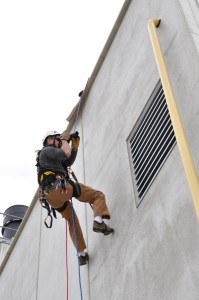
Rope access inspections are one of the most extraordinary methods of performing an inspection. This technique places an engineer face-to-face with the area of interest and with the ability to do so in almost any location imaginable. This article will quickly illustrate the benefits and considerations associated with this methodology, along with where it can be used effectively.
Rope Access as defined by the Society of Professional Rope Access Technicians (SPRAT) is a “set of techniques where ropes and specialized hardware are used as the primary means of providing access and support to workers.” Simply, it is ‘rock climbing’ with extensive safeguards. Further, it utilizes a two-rope system where one rope is the primary means of support, and the second rope provides backup fall protection. The system gives the flexibility of reaching a location by way of anchoring ropes in various configurations and to traverse to the location of concern. Imagine inspecting a failed or suspect catwalk within a bulk material storage facility. Conventional methods would require emptying the facility of the material, then renting and delivering a mobile lift. The logistics involved with this would require determining an alternate location to store the material and offloading the facility, causing great disruption to the facility. Utilizing rope access techniques, an engineer can traverse the structure and safely observe the area of interest from the safety of a rope, without having to offload the facility or bring in special equipment.
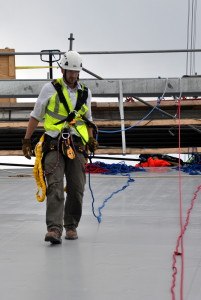
The efficiency and versatility help to ensure that when the rope access team shows up to the site, they are able to adapt the system quickly and effectively to gain access. The systems can be deployed quickly and are reconfigurable with little expense, offering the ability to adapt to unique conditions and environment.
Most importantly, the industry has an impeccable safety record. According to the International Industrial Rope Access Trade Association, with reportable injury rates in 2014 at only 64 per 100,000 workers and zero fatalities, rope access is far below the average construction injury rates at 365 per 100,000 workers just related to falls alone.
The techniques allow for a wide range of tasks to be performed while on the rope, including visual and photographic documentation, non-destructive examination and instrument installation. Further, if a client would like to have a live view of the tasks being performed or to allow group participation of the inspection, e.g. an all-party inspection, a live feed can be wirelessly sent to a tablet to allow real-time visualization of the areas of interest.
The service tends to be less expensive than renting and installing a swing stage moveable scaffold and is much quicker. Eight hours of inspection time performed on a façade, can be performed with little advance notice, and is estimated to be more than 40 percent cheaper than renting a swing stage with operators.
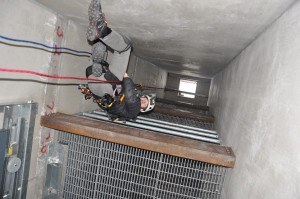
A unique application of the service occurred recently when a roof of a large building collapsed. The walls of the facility remained standing, and with the debris pile on the interior of the building, conventional entry could not be made without altering the walls, which could unknowingly alter artifacts that may be important in the investigation of the failure. Using Rope Access techniques, entry was made from above, and allowed investigators to descend onto the debris pile and document the condition of the walls. The documentation was then shared will all interested parties and a location was agreed upon to cut and gain access to the site. This method quickly and efficiently provided access to the site, while limiting the concerns of spoliation and destruction of artifacts in the matter. Rope access was used, preventing the need for delivering costly equipment, operators and delays to the inspection schedules.
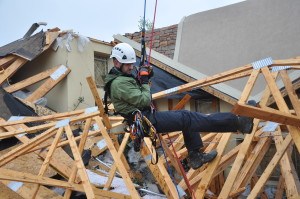
A few of the many places rope access can be used are in the following locations: agricultural and industrial facilities, large atriums, building façades, collapsed or damaged structures and historic buildings.
Scott A. Nesvold, M.S., M.Eng., P.E. is a fire protection engineer and manager of Building Science Structural at Crane Engineering.
Was this article valuable?
Here are more articles you may enjoy.

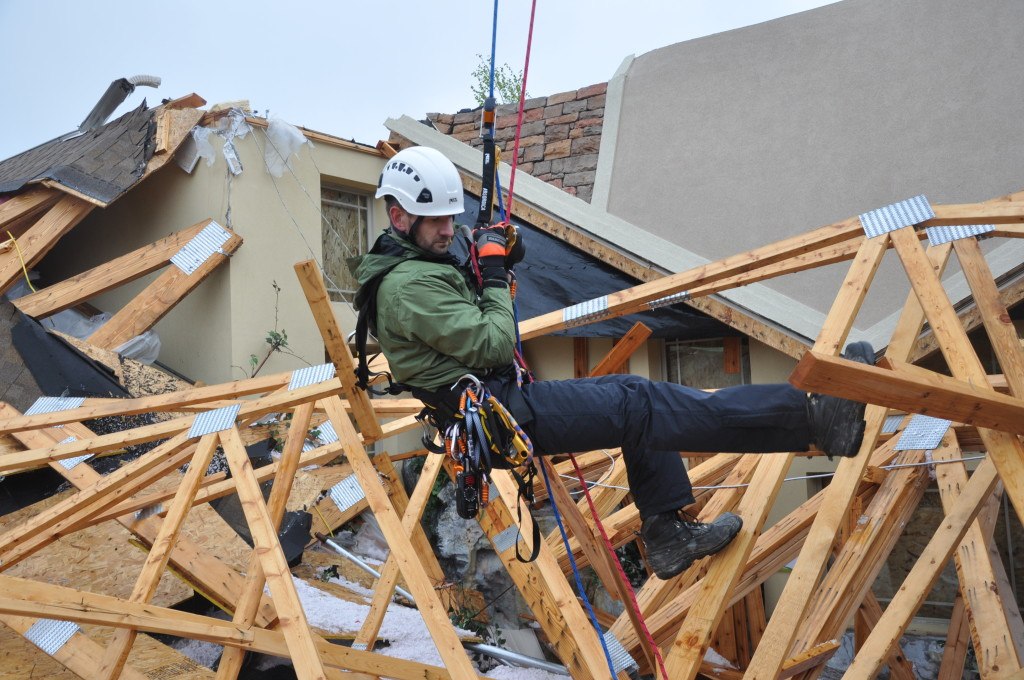
 Instacart to Pay $60 Million in FTC Consumer Protection Case
Instacart to Pay $60 Million in FTC Consumer Protection Case  Poorer Americans Dropped Federal Flood Insurance When Rates Rose
Poorer Americans Dropped Federal Flood Insurance When Rates Rose  Marijuana’s Move to Schedule III: What it Really Means for Cannabis Insurance
Marijuana’s Move to Schedule III: What it Really Means for Cannabis Insurance  Flooding in California Leads to Soaked Roads, Water Rescues and 1 Death
Flooding in California Leads to Soaked Roads, Water Rescues and 1 Death 